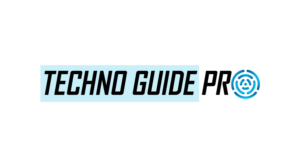Drone companies are changing how data is gathered and processed in the land surveying scene of the present day. Even in difficult terrain, surveyors can obtain very accurate topographic data by combining drones with LiDAR (Light Detection and Ranging) technology. Using laser light, LiDAR systems generate dense, three-dimensional point clouds of the ground surface. This lets experts find slight elevation changes and map features buried under foliage. Drones LiDAR is perfect for projects needing centimeter-level accuracy across vast regions of land since it offers faster, more consistent, and more thorough findings than conventional techniques.
Rapid data collection in Sydney increases efficiency.
Surveying initiatives in urban areas like Sydney are time-sensitive. Using drone mapping services Sydney lets experts gather large quantities of data fast without interfering with everyday city activities. Covering hundreds of hectares in a single day, drone LiDAR dramatically cuts the time and labor usually needed by ground teams. This is particularly useful in surveying traffic corridors, construction sites, or real estate developments when speed and little disturbance are critical. Surveyors may gather data in just hours it would sometimes take weeks, therefore it is a wise investment for companies operating under tight deadlines.
Access to Dangerous or Hard-to-Reach Terrain
From thick woods to rough coasts and distant outback areas, Australia offers a variety of landscapes. Safety issues and access difficulties make such situations challenging for traditional surveying techniques. By flying over regions hazardous or challenging to walk, Drone LiDAR removes these concerns. Drones offer a safe, quick way to gather precise elevation data from bushfire-prone areas, marshes, and cliffs to more remote locations. This accessibility increases the range and efficacy of land development and conservation initiatives by allowing the assessment of sites once considered unfeasible or too hazardous.
Affordable Options for Large-Scale Surveying Initiatives
Using drone LiDAR for land surveying has significant cost-efficiency benefits. Once seen as a luxury service, the technology is now more reasonably priced because of developments in sensor miniaturization and drone platforms. Drone surveys result in notable operating cost reductions since they need less equipment, less field staff, and little ground access. Furthermore, the quicker response time lessens the need for return visits and project delays. From agricultural to mining to infrastructure planning, drone LiDAR is becoming more appealing for government and business sector customers due to lower cost and high data quality.
Better Data Integration and Flexible Application
Drone LiDAR data is easily incorporated into CAD systems and contemporary mapping tools, hence enabling smooth design planning and analysis. Surveyors can create orthomosaic maps, 3D visualizations, and digital elevation models (DEMs) that enable a range of uses including urban planning, flood risk modeling, and environmental assessments. Drone LiDAR’s adaptability makes it a useful tool not just for surveyors but also for engineers, architects, and environmental scientists. Its versatility across several industries emphasizes the changing power of drones in changing the future of spatial data processing in Australia.
Conclusion
By providing remarkable accuracy, quicker data collecting, and wider reach, all while lowering costs and enhancing safety, Drone LiDAR is changing the land surveying sector in Australia. From thick woods to inner-city projects, drones fitted with LiDAR can handle a wide spectrum of situations and uses. These advantages help to assist more intelligent infrastructure planning and sustainable development by making drone technology necessary for contemporary surveying activities. Check out experienced drone LiDAR alternatives at highexposure.com.au if you want consistent and creative aerial solutions to see how your next project can achieve new heights with modern aerial data.





